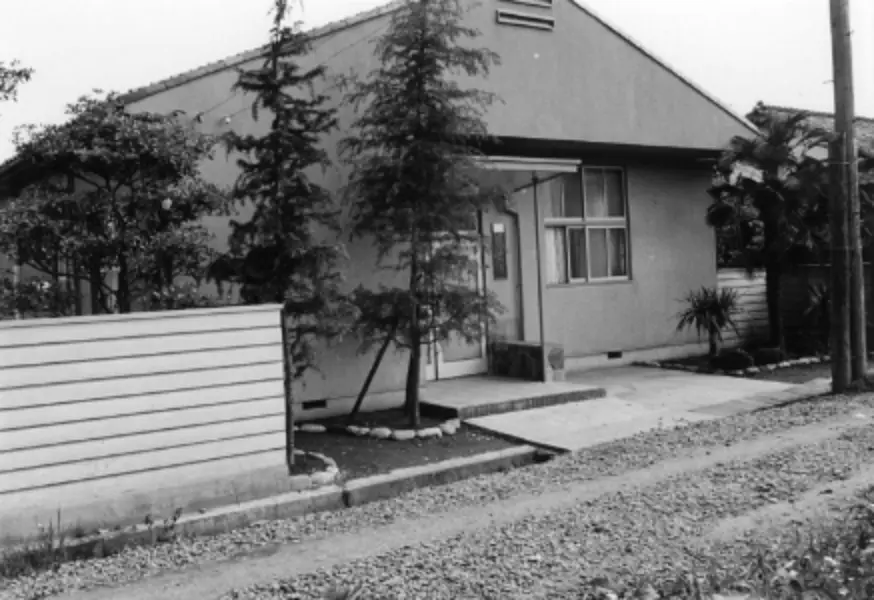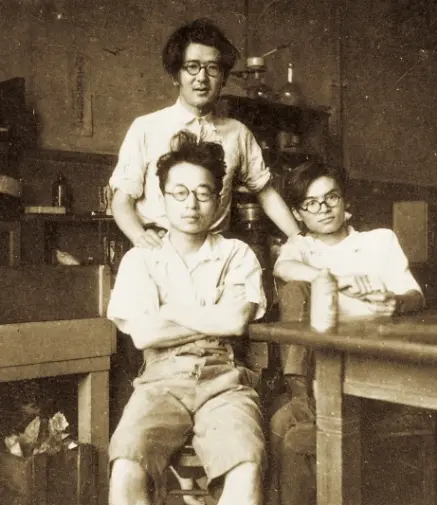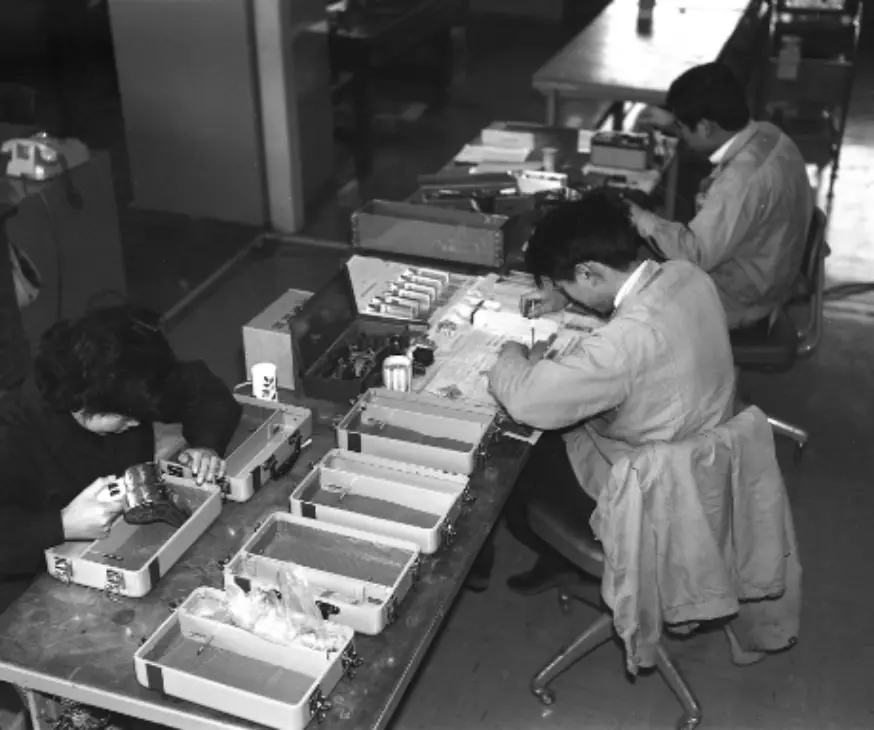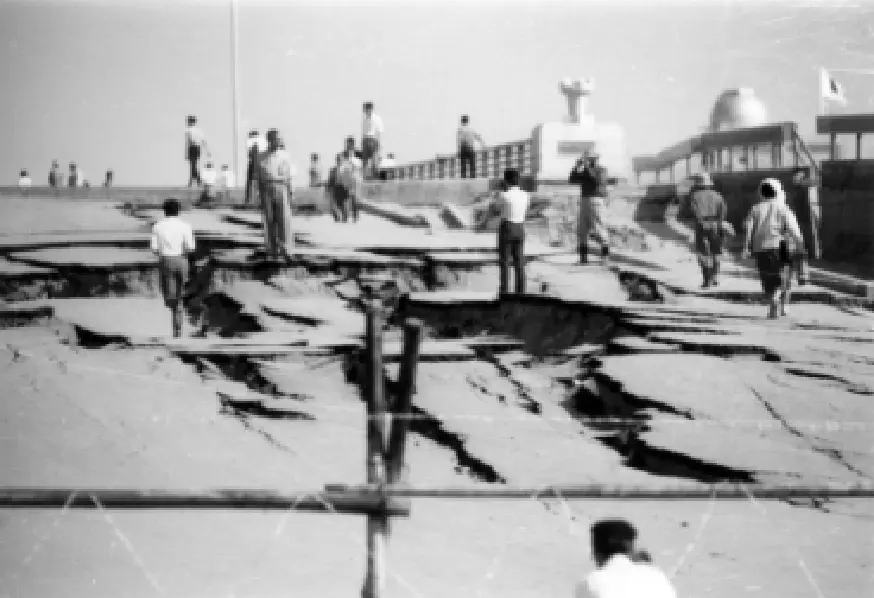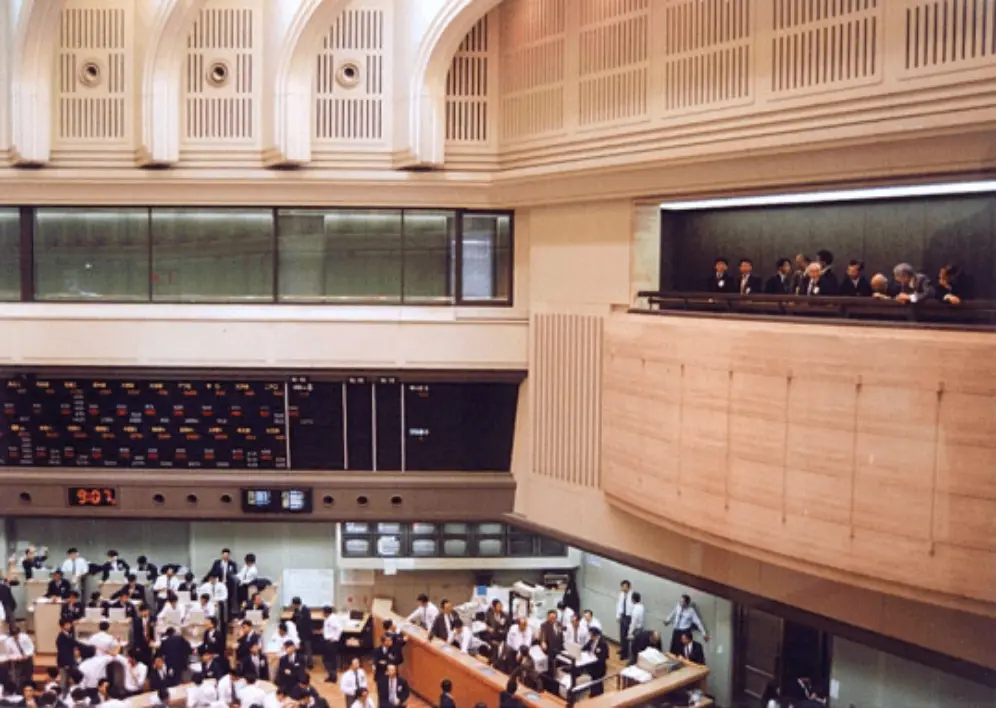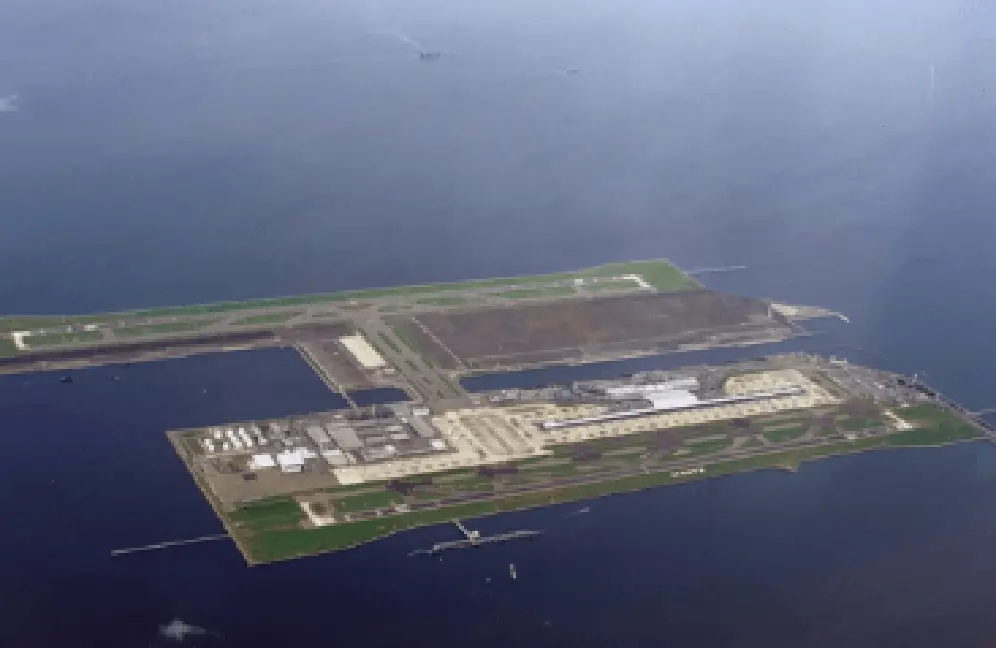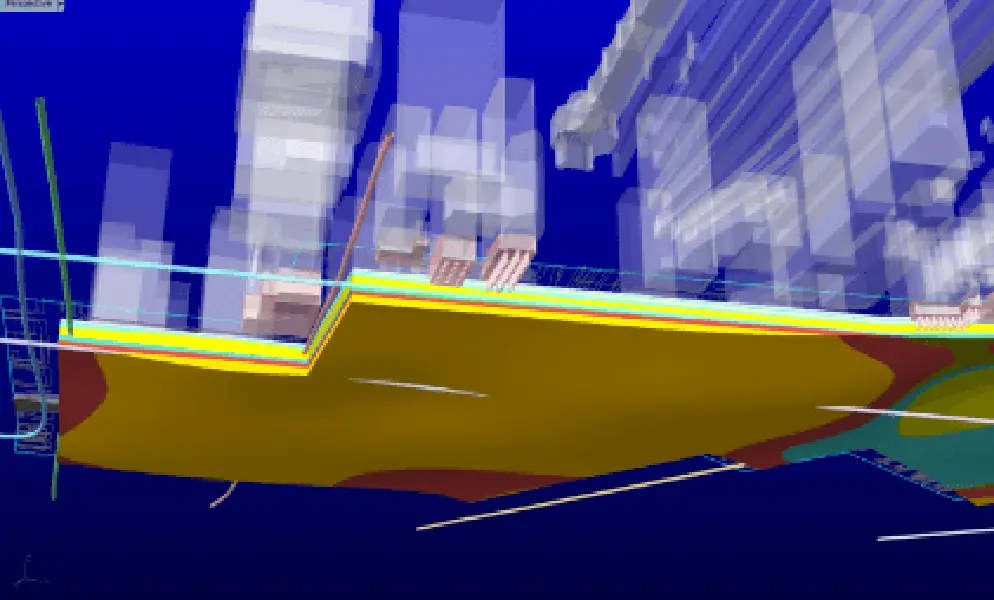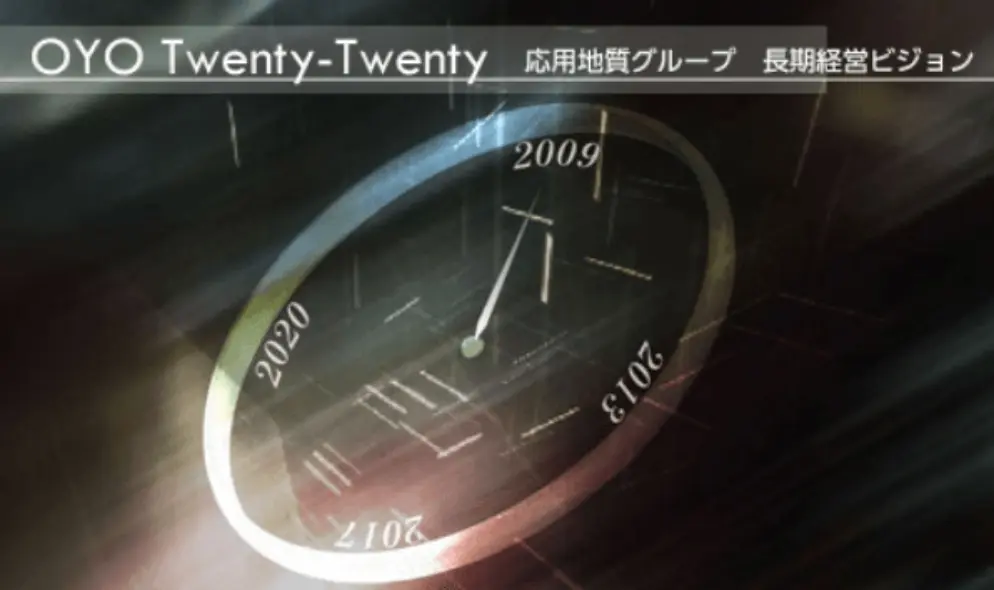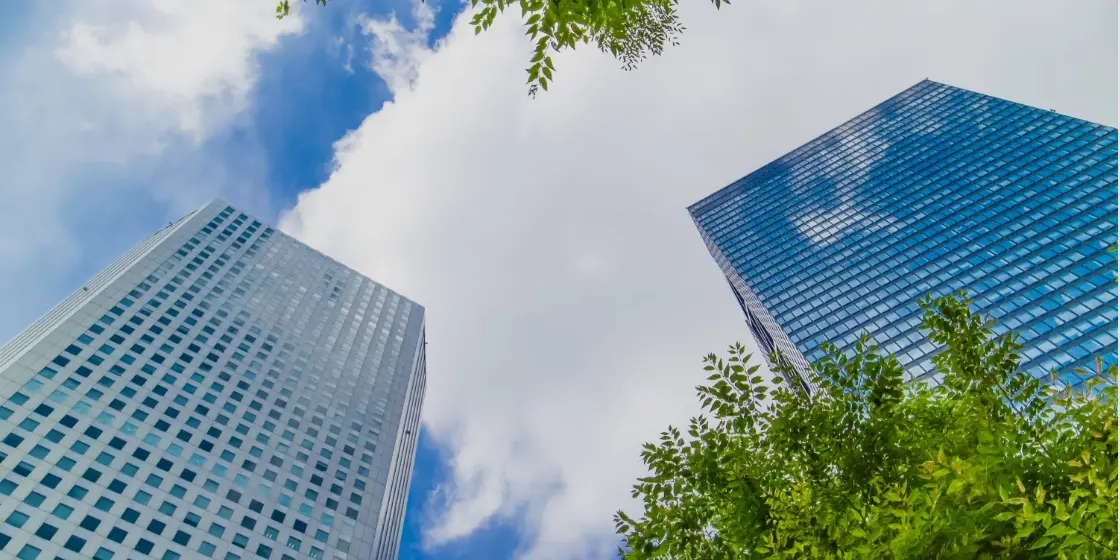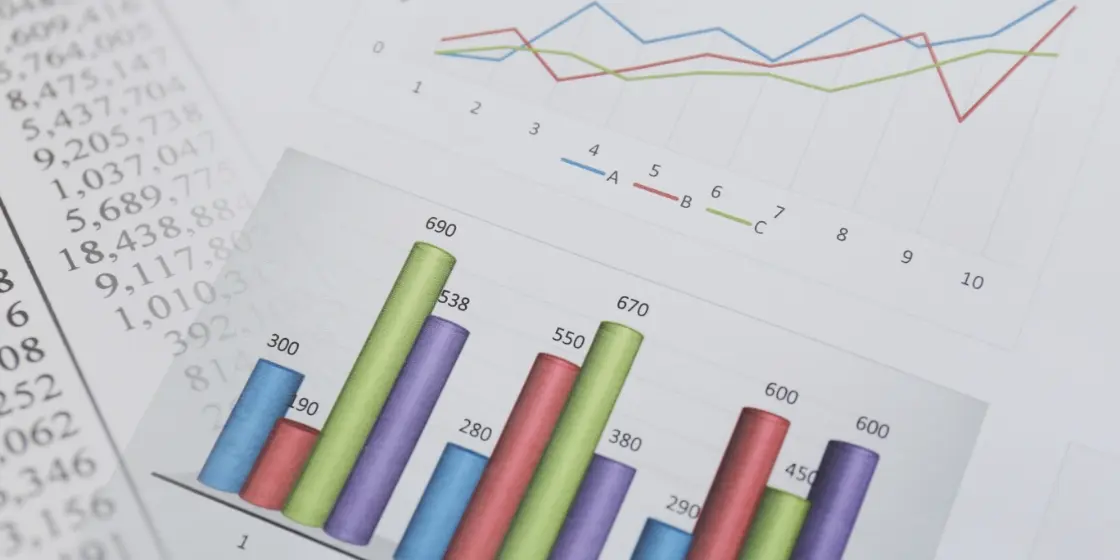OYO's History
Start-up to foundation building period
1954 ~ 1964In 1951, Atsuo Fukada, an assistant at Hokkaido University, collected an enormous amount of ammonite in order to investigate the stratigraphy of the upper Cretaceous layer, which extends into the flooded area of the planned dam site. Fukada's geologic maps and geologic sections caught the eyes of the people involved in dam construction. They were found to be very useful for determining the location and design of dam sites and quarry sites (the mountain from which the materials necessary to construct the dam were collected). This led to the establishment of the Fukada Geological Research Institute, which is the predecessor of OYO Corporation, to create the interface between the geological field and the civil engineering field. In 1957, the OYO Geological Survey Office was established under the banner of "Creating Geological Engineering." The company had a capital of 5 million yen, 68 shareholders, and 21 employees. The company's name, "OYO," can deal with geotechnics as a whole and is proud of the fact that it is the first class in the field of "geology application."
- 1954
-
- Established the Fukada Geological Institute (predecessor of OYO)
- 1957
-
Launched instruments business
- Established the OYO Geological Survey Office
under the slogan of "Creating Geological Engineering"
- Established the OYO Geological Survey Office
- 1958
-
- Started applying geophysical exploration methods in the resources field to civil engineering
- 1963
-
- Completed construction of Urawa Laboratory as the "base of creation"
- 1964
-
Launched disaster prevention business
- Dispatched the Company's first disaster research team upon occurrence of Niigata Earthquake
Growth period
1971 ~ 1995As Japan entered a period of high economic growth, large-scale infrastructure such as the Meishin Expressway, the Tomei Expressway, and the Tokaido Shinkansen were built one after another. At the same time, demand for geological surveys increased rapidly, and the OYO Corporation business grew dramatically. Through a combination of detailed geological surveys, geophysical exploration, and borehole drilling, we have developed a new standard for geological surveys in the construction business by creating the interface between civil engineering and geology. We made the necessary instruments for the survey, and it was developed into the manufacturing and sales business of measuring instruments. Meanwhile, the Niigata Earthquake occurred in 1964, and we dispatched a disaster investigation team voluntarily for the first time because we thought that, as Japan is a country with many natural disasters such as earthquakes, storms, and floods, we should aim to use our research technologies for mitigating the damage caused by those disasters. This led us to dispatch the investigation team in response to large-scale earthquake disasters in Japan and overseas and continue to study the mechanisms of disasters and the actual damage conditions. In 1965, we exhibited measuring instruments at the Japan Industrial Exhibition held in Beijing and Shanghai. We took the first step as a manufacturer, and at the same time, we entered overseas markets for the first time.
- 1971
-
- Dispatched research team upon occurrence of San Fernando Earthquake - the Company's first such team sent abroad
- 1972
-
- Held the first in-house technological workshop
- 1974
-
Initial phase of environmental business
- Held the first geological survey instruments exhibition (present OYO Fair)
- 1976
-
Launched energy-related business
- Started investigation of damages caused by bank collapse of Nagaragawa River as well as by wind and flood
- 1979
-
- Introduced OYO 2000, the Company's first long-term vision
- Established the Chemical and Environment Laboratory to "explore the domains between civil engineering and chemistry"
- 1980
-
- Started overseas businesses on a full scale
- 1985
-
- Changed the corporate name to "OYO Corporation"
- 1992
-
Initial phase of infrastructure maintenance and management business
- Established "Core-Labo Testing Center", a comprehensive testing and research center for rocks, soil and water (one of the largest facilities in the private sector)
- 1995
-
- Listed on the First Section of the Tokyo Stock Exchange
- Worked upon the Great Hanshin Earthquake (mobilized 4,000 people in total)
Revolution period
1998 ~ 2009
Environmental business as "a creation of the interface between civil engineering and chemistry," rivers and energy fields business had shifted into high gear.
1979, the 25th anniversary of its founding. We have grown into a company with 700 employees and more than ¥10 billion in sales.
Starting with the establishment of the first overseas subsidiary in Houston, Texas, in 1980, we established branches in the UK and Singapore. Our overseas business activities had shifted
into high gear.
Meanwhile, in Japan, the business environment deteriorated due to the economic recession following the second oil crisis and the restraint of public investment. As a result, in fiscal
1983, sales and operating income declined for the first time since the establishment of the Company.
Beyond the geological survey industry, where the market had begun to shrink, the
company had shifted its business direction to a comprehensive consultant, including design and construction management in the construction field, maintenance, and management of
infrastructure facilities, environmental fields such as industrial waste and groundwater pollution countermeasures, disaster prevention, and regional development. On May 20, 1985, we
changed our name to "OYO Corporation" in order to clarify our corporate vision for the 21st century.
Starting with the acquisition of Geospace Inc. in the US in 1986, we acquired Kinemetrics Inc. in the US (1991) and Geometrics Inc. (1997). Overseas mergers and acquisitions have become
more active.
In 1992, the "Core-Labo Experiment Center" was established as a comprehensive testing and research center for rock, soil, and water. OYO was listed on the First Section of the Tokyo Stock
Exchange on June 1, 1995.
- 1998
-
- Established OYO Biological Engineering Institute with an aim to fuse civil engineering and ecological science
- 2000
-
- Adopted the Executive Officer System
- 2003
-
- Renewed the Management Philosophy and Management Vision
- 2006
-
- Prepared the OYO Compliance Manual
- 2009
-
- Established OYO2020, the Long-Term Management Vision of the OYO Group
New Growth period
2010 ~ 2021
In 1997, the 40th anniversary of founding. Established the OYO Bionomical Engineering Institute in Miharu-cho, Fukushima Prefecture with the aim of "integration of civil engineering and
ecology".
In 2009, the long-term management vision "OYO 2020" was formulated, in which the vision that the Group should aim for and the basic policy for achieving the vision were specified, as
construction-investment-type public works was shrinking, and the social situation was changing rapidly.
We aimed to expand our business by eliminating our past success experience
(i.e. a conventional business during our high growth period) and by changing our business style.
In 2014, the third medium-term management plan "OYO Step14" was formulated. In the plan, we challenged for replacing the shrinking old-style businesses with new-style businesses.
In 2018, the fourth medium-term management plan "OYO Jump18" was announced. In the plan, we are aiming to accelerate the challenges we have tackled so far, and to expand our business and
further strengthen our management foundation in order to achieve sustainable growth for the Group.
In 2021, we formulated the new Medium-Term Business Plan "OYO ADVANCE 2023" that
will promote the growth of a profitable business while taking over the results of activities in the previous Long-Term Management Vision "OYO 2020" and the previous Medium-Term Business
Plan "OYO Jump 18".
- 2010
-
- Established the Medium-Term Business Plan "OYO Hop 10"
- 2011
-
- Worked upon the Great East Japan Earthquake
- 2014
-
- Established the Medium-Term Business Plan "OYO Step 14"
- Formulated the Guiding Principle for CSR
- 2016
-
- Started endeavors for work-life balance
- 2018
-
- Established the Medium-Term Business Plan "OYO Jump 18"
- Changed business segments
- 2020
-
- Selected as one of the "Noteworthy DX Company 2020" and received the highest award in "MCPC Award 2020"
- Revised of the Corporate Code of Conduct
- 2021
-
- Established the Medium-Term Business Plan "OYO Advance 2023"
- Formulated the OYO Group Human Rights Policy, Human Resource Development Policy, Safety Policy, and Health Management Declaration
- 2022
-
- Transitioned to the Prime Market of the Tokyo Stock Exchange due to market segment reorganization
- Established the Environmental Policy
- Selected as a DX Stock 2022
Current
2023 ~- 2023
-
- Carbon Neutral Declaration
- Certification as Health & Productivity Management Outstanding Organization 2023
